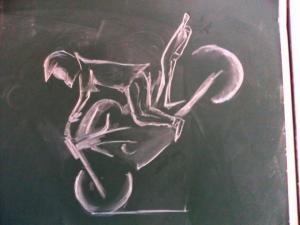Looking for design inspiration? Browse our curated collections!
September 10th, 2015 - 11:52 AM

How many times have you looked at an abstract painting and heard someone say, "I could do that!"? While abstract painting looks easy to some, it can actually be more challenging than traditional or classical painting. This is because abstract art defies rules and conventions. It's up to you as the artist to break rules, be expressive, and decide what is art. First, prepare to paint. Then, decide if you'd like to create a random geometric abstract painting (in the style of Paul Yanko or Thornton Willis), a minimalist geometric abstract painting featuring bold geometric shapes (in the style of Piet Mondrian or Paul Klee), or if you'd like to focus more on the process of painting (in the style of Jackson Pollock or Mark Rothko).
STEP 1
Find a canvas. You can buy a ready made canvas of any size in a craft store. It will be prepared for immediate use; however, there are no rules saying you have to use a primed and stretched canvas. In fact, abstract artists often use unstretched, unprimed canvases.[1]
If you prefer a colored background, buy a jar of Gesso to prime the canvas and give it a touch of color. The primer should dry quickly.
STEP 2
Choose your paints. Decide whether to use acrylics or oil paint. Acrylics have no odor and are easy to work with since they dry fast and can be painted over if you make a mistake. Oils, on the other hand, aren't usually used because they take longer to dry, have an odor, and do not allow you to paint over mistakes.
STEP 3
Gather brushes and other tools. Pick whatever brushes you like to use with the paint you've already chosen. You might also consider using a palette knife to apply paint, giving it a textured look. While some artists like to use an easel, many abstract artists choose to place their canvases directly on the floor in order to be closer to the work.[2]
If you're unsure about what colors work well together, think about picking up a color chart/wheel. This will actually show you which colors compliment each other.
STEP 4
Change into painting clothes. Depending on how messy you're planning on getting, it's wise to change into an old shirt or painting smock. Wearing something you're not worried about will allow you to focus more on the painting or process of abstract art.
You may want to lay down newspapers to prevent drips or spills, especially if you plan on flicking paint or laying the canvas on the ground.
Comments
There are no comments on this blog. Click here to post the first comment.